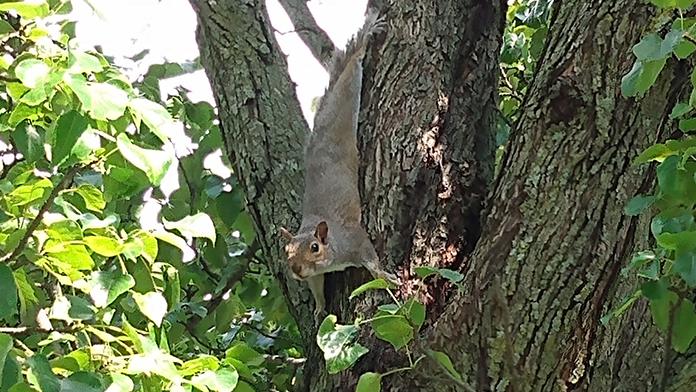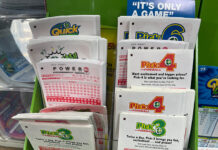
HOWELL – Recently, the Howell Township Green Team was awarded a $2,000 Sustainable Jersey grant from the PSE&G Foundation, one of only 35 such grants that were distributed in New Jersey.
“We have an ordinance that encourages green design,” said Howell Township Planning Board Chairman Brian Tannenhaus at a recent hearing. “Green design. We all know what that coined phrase means. It could be solar panels, it could be rain guards, it could be locally sourced or recycled materials.”
It is clear that Howell Township has an eye towards an eco-friendly future. But while the township is free to use the grant money to fund such projects as mobile farmers markets, rain gardens, climate adaptation plans, environmental resource inventories, stormwater projects and street improvements, it has already been earmarked for something more specific in Howell.
“This grant will allow the Green Team in cooperation with the Howell Environmental Commission to install a Pollinator Garden at the Howell Community Wildlife Habitat at a site that is currently being revitalized,” said Lisa Doud of the Howell Township Green Team. “We are proud to partner with Sustainable Jersey on environmentally beneficial projects to engage and educate our community.”
The Green Team is currently working with the New Jersey Audubon Society to educate township residents about creating their own wildlife habitats, and there are a variety of ways that township residents can make their properties much more eco-friendly.
Perhaps the simplest way to be eco-friendly and make one’s property more enticing to wildlife is by starting “a native plant garden,” according to Doud, “that incorporates native shrubs and flowers that attract butterflies, hummingbirds, and other pollinators. There are many herbs that provide food for pollinators.”
Planting a vegetable garden provides a fresher, economical alternative to produce obtained in a supermarket. For those who have space, fruit trees can provide a steady supply of delicious favorites while reducing carbon dioxide and providing shade for those backyard barbecues.
“The planting of native trees, shrubs and flowers benefits our local wildlife,” advises Doud, “by providing food and shelter for local wildlife including birds and small animals along with bugs and butterflies.”
What follows are suggestions from the Humane Society of the United States (humanesociety.org), Humane Decisions (humanedecisions.com), The Allegheny Front (alleghenyfront.org), and Jersey-Friendly Yards (jerseyyards.org).
Summer temperatures can mean difficulty for many native species to find an ample water supply. If residents have the space on their property, putting in a pond is most beneficial to amphibians such as frogs and salamanders who need to keep their skin moist.
For many residents, a pond is not feasible on their property. However, yards can be easily made more animal friendly by providing water. A large pan of fresh water in the yard is an excellent way to provide for four-legged visitors, and a birdbath can provide relief from the heat for the feathered, two-legged visitors.

While exotic plants or non-native species of flora may look great, planting these is not conducive to an eco-friendly yard. Sure, plants like bamboo spread quickly and grow rapidly, but native animals don’t eat it. Planting species that are native to New Jersey can provide a source of food for animals, and often times be more enticing to local wildlife.
For those with a larger piece of property, consider letting some of it return to the wild, particularly if it borders woods or forests. By not cutting the entirety of the lawn, homeowners can save money on gasoline, reduce emissions, and provide hiding spaces for local wildlife.
On the subject of lawns, it’s better for the environment, including those critters that visit residents’ yards, if homeowners avoid using chemical treatments to control weeds or insects. Many treatments are harmful to animals, and even if they are not, they often kill the insects that the animals may feed upon. Additionally, lawn chemicals seep into the ground and get into the water table, where they negatively impact the water supply, including the water that many local residents get from their wells.
Few people consider building a brush pile to attract local wildlife, but a collection of cut branches, twigs and other such natural items can provide an excellent safe haven for woodchucks and chipmunks to make their dens near, and even for snakes to take up residence. While many people will scoff at the idea of making one’s yard a snake haven, they can help keep down the rodent population by preying upon field mice.
Residents can help keep flying visitors safe and well fed by installing a bird feeder, which is particularly critical to keep stocked during winter months. During spring, summer, and early fall, not filling a birdfeeder encourages birds to eat insects, which helps keep the bug population in check.
For anyone who wants to see more permanent residents in the yard, consider putting up bird houses that encourage local species to make use of them. A variety of different styles are available to encourage cardinals, purple martins and even hummingbirds to take a new home address.
An even more adventurous homeowner may choose to attract a different type of flying visitor, namely, bats. Like snakes, the thought of attracting bats to one’s yard may seem unusual to many. But by providing a bat house, one can help to ensure the continuance of the species, and at the same time homeowners may also be doing themselves a favor. The concern about bats is the misconception that the majority of them carry rabies, but the fact is that annually, less than one percent of the population is found to have the disease.
Bats, like birds, are beneficial in that they eat insects. In fact, one bat may eat hundreds of insects in a single night of hunting. There are primarily two species found in New Jersey, the large (Eptesicus fuscus) and small brown bats (Myotis lucifugus). Both are protected under New Jersey law, making it illegal to kill or capture them.
Bats may live as long as thirty years and will often return to the same spots to roost. So, if one provides a comfortable safe haven for bats, it is likely that the homeowner may see them return repeatedly as their family begins to grow.
Sadly, some of the trappings of modern life that make our homes enjoyable are dangerous for local wildlife. Homes with lots of windows, a glass-enclosed porch or solarium may pose problems for birds. Thinking that they can fly through, birds will often fly into windows at high speeds, particularly when looking to avoid predators. Netting near windows, or even some types of decals and stickers on the windows can help keep birds from injuring themselves and avoid the potential of having to replace broken windows.
In a similar respect, in-ground pools can be death traps for many animals. A sturdy, solid fence around a pool will keep out things like toads, frogs and baby animals that often get trapped in pools and drown, particularly when they get caught in the filtration system and are unable to escape.
Ecology takes effort and is the responsibility of us all. By taking just a few steps around the house and yard, homeowners can help combat climate change, be more eco-friendly, and encourage local wildlife to view those yards as a safe haven that can provide families with memories that will last a lifetime.






